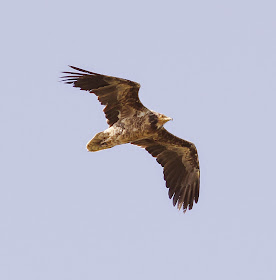Tuesday morning I met up with Andy and Craig for a ringing session at Oakenclough. Recent weather and other setbacks delayed the opportunity but at last everything came good in a way best summed up by today’s headline.
Things were quieter than of late in both numbers and species however we managed to catch 54 birds, 24 new ones, 29 recaptures from recent weeks and a single “control”.
Control is the terminology ringers use to describe a bird bearing a ring from elsewhere, in this case a first winter male Goldfinch with a standard British ring but inscribed with a letter/number combination we don’t own.
In due course, and once the record is submitted to and analysed by the BTO database, the original ringing data of who, when and where will be sent to us. In return the original ringer will find out when and where “their” Goldfinch was recaptured and who captured it on 30th December 2014.
Our new birds comprised 7 Goldfinch, 4 Chaffinch, 7 Blue Tit, 4 Great Tit and 2 Goldcrest. Recaptures materialised as 13 Coal Tit, 12 Blue Tit, 3 Goldfinch, 1 Dunnock. No new Coal Tits and 13 recaptures of the same species suggest that we may have caught a good proportion of those wintering in the immediate area.
In between our bursts of ringing activity a little bird watching in the immediate area found 2 Grey Wagtail, 2 Pied Wagtail, 3 Jay, 1 Buzzard, 1 Kestrel, 1 Sparrowhawk and 1 Raven.
Craig located a small flock of 12 Siskin and 6 Goldfinch feeding in the alder trees. We are hoping that the regular catches of Goldfinches will soon be augmented by their two near relatives once they decide to add niger seed to their diet.
Craig located a small flock of 12 Siskin and 6 Goldfinch feeding in the alder trees. We are hoping that the regular catches of Goldfinches will soon be augmented by their two near relatives once they decide to add niger seed to their diet.
Siskin
Further to the problems of last week when some miserable sod stole bird feeders from this site, a kind blogger friend in Kentucky sent me a link to read how others have tackled equally selfish thieves.
Read about the remarkable things that some folk will steal and have a good laugh about the victims’ understandable outrage and subsequent responses at www.dontbeamiserablesod.com
More birds soon from Another Bird Blog.


















































